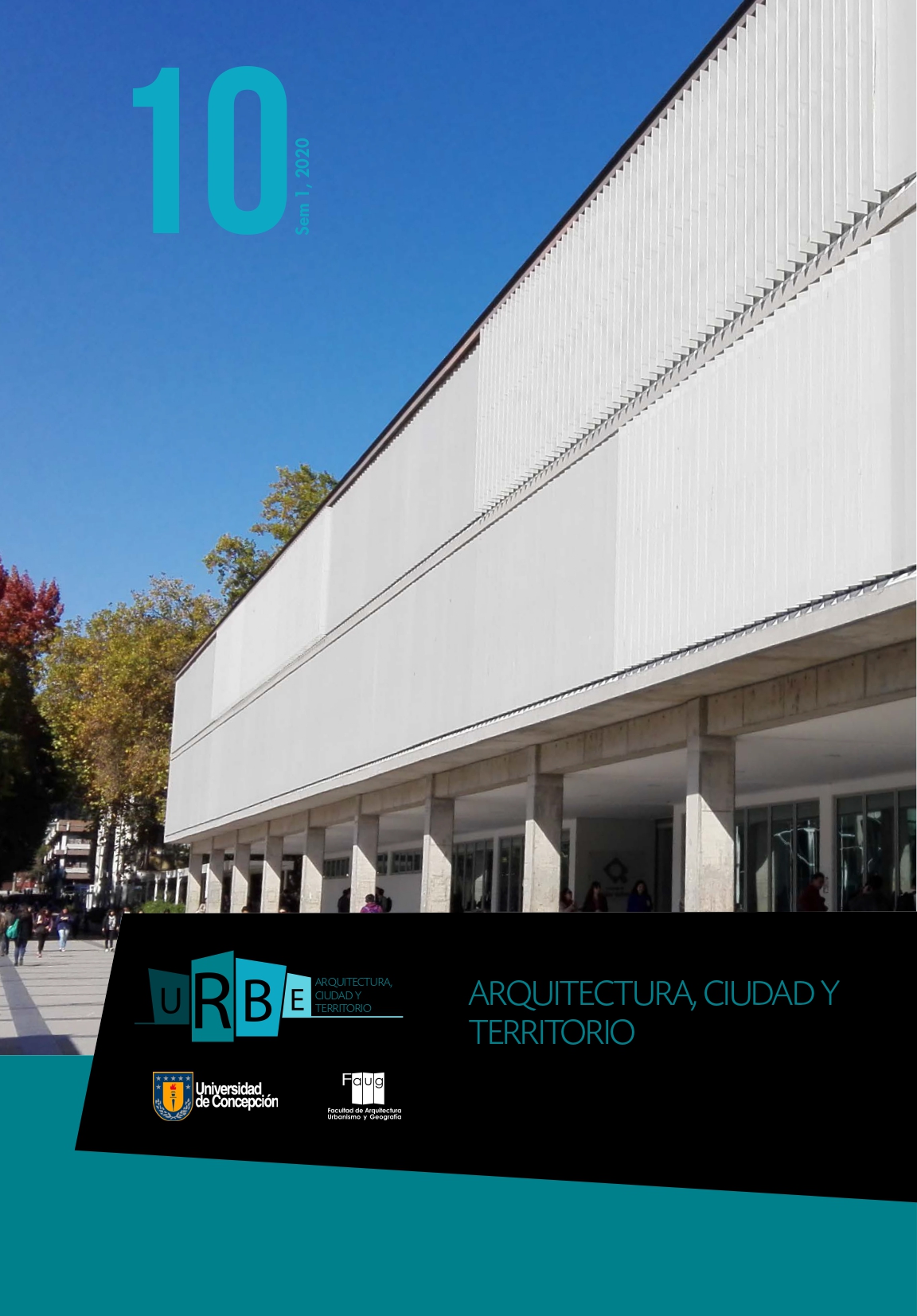University campus for local and regional development: Master plan for the future of the University of Concepción in the agro-region of Ñuble
DOI:
https://doi.org/10.29393/UR10-5CUMD30005Keywords:
University campus, agricultural city, regional development, master plan, urban sustainabilityAbstract
University campuses operate as an instrument of connection between universities and their urban environments. Their location in intermediate cities is key to stimulate local development. The following article addresses the potential of the future development of the Chillán campus of the Universidad de Concepción, Chile, located in a region of high agricultural value. With 97 hectares, it functions as the largest “living laboratory” in the country. However, it is immersed in a city that has been losing its agricultural land in favor of low-density horizontal growth, with the consequent fragmentation of its social and urban structure. In this context, due to its location, prestige and extension, the Chillán campus offers a unique opportunity to promote more sustainable local development, in keeping with the agricultural vocation of its territory. With this in mind, the urban systems of Chillán at the campus-city interface are analyzed, and 4 master plan proposals developed by the team of students of Project IV, at the Faculty of Architecture, Urbanism and Geography of the University of Concepción are presented. This work is part of the commemoration of the 100 years of the University of Concepción, and offers guidelines for thinking about the future in expectation of the next bicentennial, through strategies that stimulation of the local economy, innovation and the emergence of new spaces and services for the community
Downloads
References
Alcántara, E. (2010). Análisis de la movilidad urbana. Espacio, medio ambiente y equidad. Bogotá: CAF. Retrieved from http://scioteca.caf.com/handle/123456789/414
Anabalón, N. (2006). Intercomunal Chillaán , una ciudad morfológica y socialmente fragmentada en busca del desarrollo sustentable. Urbano, 9(13), 92-94. Recuperado de http://revistas.ubiobio.cl/index.php/RU/article/view/482
Briones, F., Hernández, C., & Mancilla, B. (2019). La escuela práctica de agricultura de Chillán y su importancia para la agricultura regional , 1881 hasta la década de 1930. Tiempo y Espacio, (40), 54-62. Recuperado de http://revistas.ubiobio.cl/index.php/TYE/article/view/3915
Cáceres, C. y Ahumada, G. (2018). Evaluación de brechas de equipamiento urbano entre barrios de Viña del Mar, Chile: una metodología para la identificación de desiertos urbanos. Investigación Geográfica, (97), 1-22 . http://dx.doi.org/10.14350/rig.59615
Coss Lanz, A. (2010). Revisión Histórica del paisajismo de la Ciudad Universitaria de Caracas , patrimonio común universal. Apuntes, 22, (2), 156-171. http://www.scielo.org.co/scielo.php?pid=S1657-97632009000200006&script=sci_arttext&tlng=en
Dalton, L., Hajrasouliha, A., & Riggs, W. (2018). State of the Art in Planning for College and University Campuses: Site Planning and Beyond. American Planning Association, 84(2), 145-161. https://doi.org/10.1080/01944363.2018.1435300
Fuentes, P. (2007). Campus universitarios en Chile: nuevas formas análogas a la ciudad tradicional. Atenea, 496, 117-144. http://dx.doi.org/10.4067/S071804622007000200008
García-Huidobro, A., & Maragaño, A. (2010). La vertebración territorial en regiones de alta especialización: Valle central de Chile. Alcances para el desarrollo de zonas rezagadas en torno a los recursos naturales. EURE, 36(107), 49-65. https://doi.org/10.4067/S0250-71612010000100003
Gonzalez, S., & Olave, D. (1996). Áreas Verdes Urbanas en la Ciudad de Chillán . Chile. Revista Tiempo y Espacio, (6), 75-83. http://revistas.ubiobio.cl/index.php/TYE/article/view/1592
Lizárraga, C. (2006). Movilidad urbana sostenible: un reto para las ciudades del siglo XXI. Economía, Sociedad y Territorio, VI(22), 283-321. https://biblat.unam.mx/hevila/Economiasociedadyterritorio/2006/vol6/no22/1.pdf
Llop, J., Iglesias, B., Vargas, R., & Blanc, F. (2019). Las ciudades intermedias?: concepto y dimensiones. Ciudades, (22), 22-43. https://doi.org/10.24197/ciudades.22.2019.23-43
Rossi, F., & Goglio, V. (2020). Studies in Higher Education Satellite university campuses and economic development in peripheral regions peripheral regions. Studies in Higher Education, 45(1), 34-54. https://doi.org/10.1080/03075079.2018.1506917
Rueda, S. (2012). El Urbanismo Ecológico. Barcelona: Agencia de Ecología Urbana. https://www.researchgate.net/profile/Salvador_Rueda/publication/267827504_EL_URBANISMO_ECOLOGICO/links/564cadc908ae352ab55a14ef.pdf
Soto, M., & Escobar, A. (2016). Puesta en Valor del Patrimonio Agrícola en Ciudades Intermedias, caso Chillán. Revista de Urbanismo, (35), 145-166. https://doi.org/10.5354/0717-5051.2016.40050
Universidad de Concepción (2020). Historia Campus Chillán. Recuperado de http://chillan.udec.cl/index.php/historia/
Published
How to Cite
Issue
Section
Copyright (c) 2020 MONTSERRAT DELPINO CHAMY, PEDRO ORELLANA AGÜERO, FRANCO ROMERO

This work is licensed under a Creative Commons Attribution 4.0 International License.
Revista URBE. Arquitectura, Ciudad y Territorio tiene licencia de Creative Commons Attribution 4.0 International (CC BY 4.0) y debe citarse correctamente.









